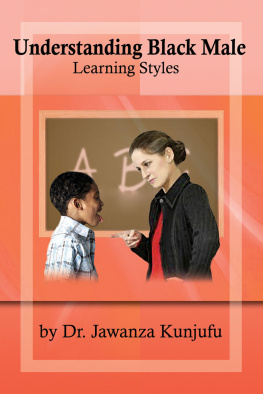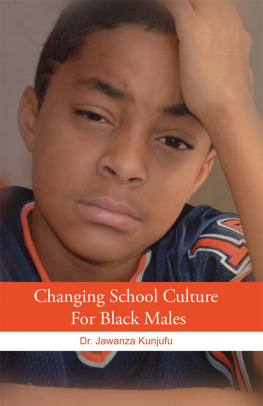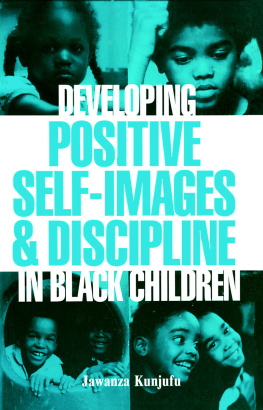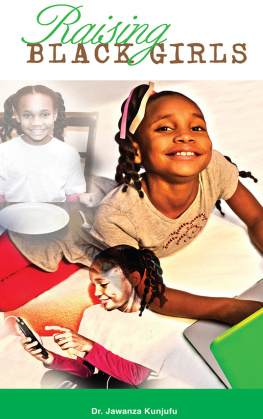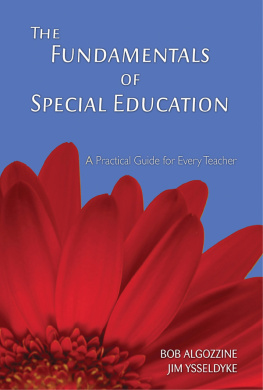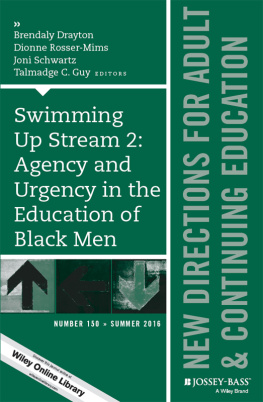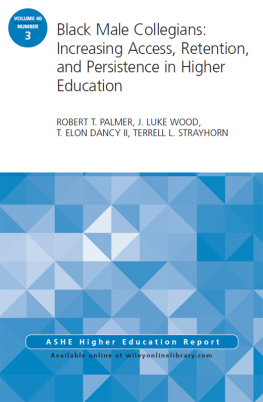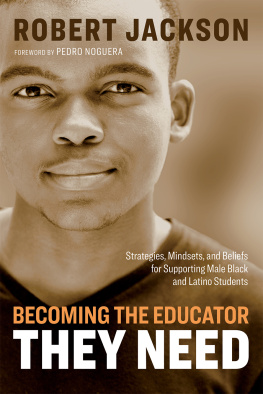
Front cover illustration by Harold Carr
Copyright 2011 by Jawanza Kunjufu
All rights reserved.
First Edition, First Printing
No part of this book may be reproduced, stored in retrieval systems or transmitted in any form, by any means, including mechanical, electronic, photocopying, recording or otherwise, without prior permission of the publisher.
Printed in the United States of America
ISBN #: 1-934155-38-1
ISBN #: 978-1-934155-38-7
CONTENTS
PREFACE: INDIVIDUAL STORIES
Darryl is a brilliant eighth grade rapper. He can listen to a rap CD and in three to five minutes, repeat the words verbatim. Darryl has an auditory learning style. If you dont think this is a skill, try listening to a rap tune for a couple of minutes and then see how many lyrics you can remember.
Despite Darryls phenomenal skill, he is failing in reading and math. Unfortunately, these two subjects are taught exclusively with textbooks and ditto sheets, two methods that have little effectiveness with Darryls dominant auditory learning style.
Kevin is a super all-around athlete who is currently in the fifth grade. This semester he received an A in physical education, but he failed reading and math. During class he would like to stand up, stretch, and walk around, but his teacher wont let him. She doesnt appreciate that Kevin is a kinesthetic learner who learns best by moving around. Unfortunately, she wants him bolted to his chair like an old desk to the floor.
David is a 10th grade student who loves playing video games. When playing his favorite games, he is focused and his concentration is high. A short attention span is never a problem when it comes to playing video games. In fact, he can play one video game for hours at a time. David is the type of young male who can take a gadget apart and put it back together without reading the instructions. Despite Davids tremendous intellectual capacity, he is failing in reading and math. What his teacher doesnt know is that he learns best by touching. He is a tactile learner. Unfortunately, in his class, the only thing he is allowed to touch are books and ditto sheets.
Willie is a third grade student who spends more time in the corner, outside the door of the classroom, and inside the principals office than in his classroom. Willie likes working with other students, and he thrives in cooperative learning groups. Last year when the teacher allowed the students to work in pairs and cooperative learning groups, Willie was on the honor roll. This year, the teacher has students working individually. Unfortunately, Willie is failing in reading and math.
INTRODUCTION
Im a consultant to schools nationwide, and the workshop Im asked to give most often is Closing the Racial Academic Achievement Gap. My second most popular workshop is Understanding Black Male Learning Styles.
This book is a sequel to my national best seller, Keeping Black Boys Out of Special Education. In it I asked the question: Is it normal for boys of all races to compromise more than 66 percent of the students who are retained, placed in remedial reading and special education classes, suspended, and who drop out?
When I work with school districts across America, Im the outsider looking inand I enjoy being an education consultant. It gives me an objective perspective. I can see things that teachers and administrators cant always see. Or they may know somethings wrong, but because theyre working with the issue day in and day out, they cant always see how to improve the situation. It helps to have someone come in with a fresh perspective, some who asks questions that, perhaps, they never thought to ask.
When I visit a co-ed school, I expect to see an equal percentage of boys and girls in advanced placement classes, gifted and talented classes, and on the honor rollas well as in remedial reading and special education classes. I expect to see suspension and dropout rates that are more or less equal. When no such parity exists in the school, this is an urgent red flag for me, and I will immediately begin to ask, Do you think this is a normal situation? They already know theres a disparity, but my question helps them to realize that to a certain extent, theyve become complacent. Boys will be boys. My challenge is to shake them out of their complacency. No, this situation is not normal. It is unacceptable, and it can no longer go on this way.
Boys of all races are struggling in school. As recently as 2002 there has been a two-to-one ratio of White boys to White girls in special education. During this period, there has been a four-to-one ratio of African American boys to African American girls in special education. Have we designed a female classroom for male students? Are we expecting boys to learn in the same manner as girls?
This book is an attempt to explain the different ways boys, especially African American male students, learn. This book answers the question I am asked most by teachers: How do we understand Black male learning styles?
I wrote my books, Black Students, Middle Class Teachers and 100+ (and 200+) Educational Strategies to Teach Children of Color, primarily for White female teachers. Eighty-three percent of elementary school teachers in America are White females. Literally, the future of the Black race is in the hands of White female teachers, yet many will admit they did not receive one class on Black history, Black culture, or Black male learning styles in college. They too are laboring under a knowledge gap. This book will inform teachers who are sincere about wanting to understand and help Black males reach their full potential. Further, while this book was written specifically about Black male learning styles, the information also will be helpful in understanding the different ways all males learn.
We will discuss in full detail the various theories about learning styles throughout the book, but for now, Id like to introduce you to the components that comprise the Kunjufu Learning Styles Model:
- Visual Learners
- visual-print
- visual-pictures
- Oral/Auditory Learners
- Tactile/Kinesthetic Learners
If two-thirds of children and an even larger percentage of African American males are right-brain learners (visual-pictures, oral/auditory, tactile/kinesthetic), but 90 percent of the lessons are oriented toward left-brain learners (visual-print), then Houston, we have a problem. The conflict between pedagogy and the dominant learning styles of Black males forms the central problem that well seek to resolve in this book.
A significant percentage of African American male students are right-brain learners, and they are struggling every day to learn from teachers who use textbooks and ditto sheets and nothing else. Thats like speaking only one language to a group of students who speak English, Swahili, Spanish, Arabic, and French. Quite a few will not understand whats being saidand then theyll be penalized for not understanding!
When I was a classroom teacher, my mentor taught me that you dont teach the way you want to teach. You teach the way your children learn. If two-thirds of your class are right-brain learners, it makes no sense to spend most of your time teaching from textbooks and ditto sheets. You must adjust your pedagogy.
I want to take this time to acknowledge the late Dr. Rita Dunn. She dedicated more than 30 years of her life to understanding learning styles and appealing to teachers to adjust their pedagogy to meet childrens learning needs.
Next page
